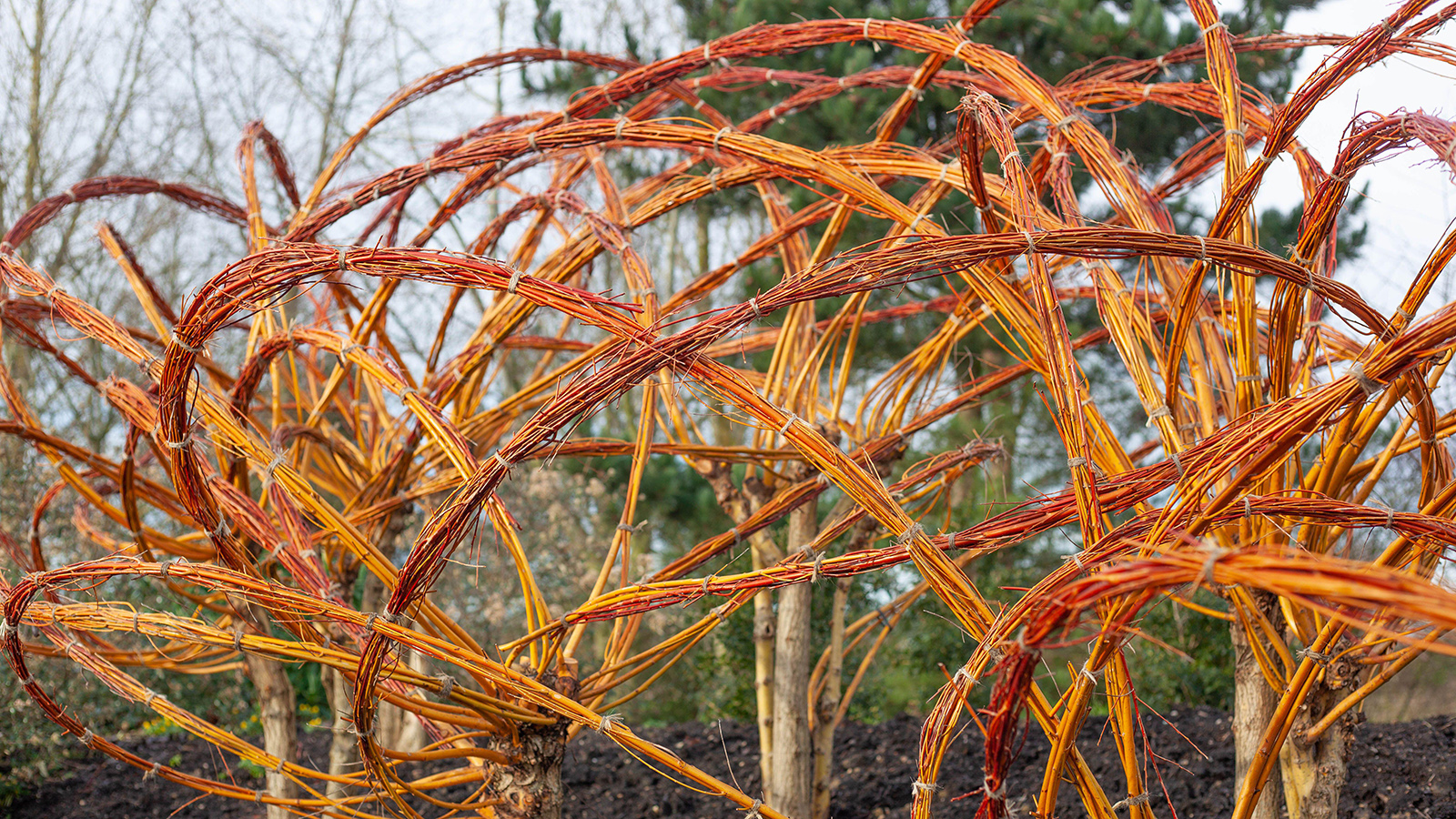
Including plants with attractive winter bark in your garden means that when the rest of your space is stripped bare of leaves and flowers, there's something else that can take center stage.
The twiggy outlines and extraordinary colors and textures of stunning stems and beautiful bark catches the eye and creates a gorgeous focal point. Choose the right trees and shrubs and they will bring your winter garden alive.
You can plant these hardy deciduous trees and shrubs throughout winter as long as the soil is not waterlogged or frozen.
9 plants with attractive winter bark
When planting your new tree or shrubs from pots (rather than bare root), tease out congested roots and make sure they’re moist before they go in the ground.
Choose a spot where the winter sun will light up their bark and stems to show them off to perfection.
1. Salix x sepulcralis ‘Erythroflexuosa’
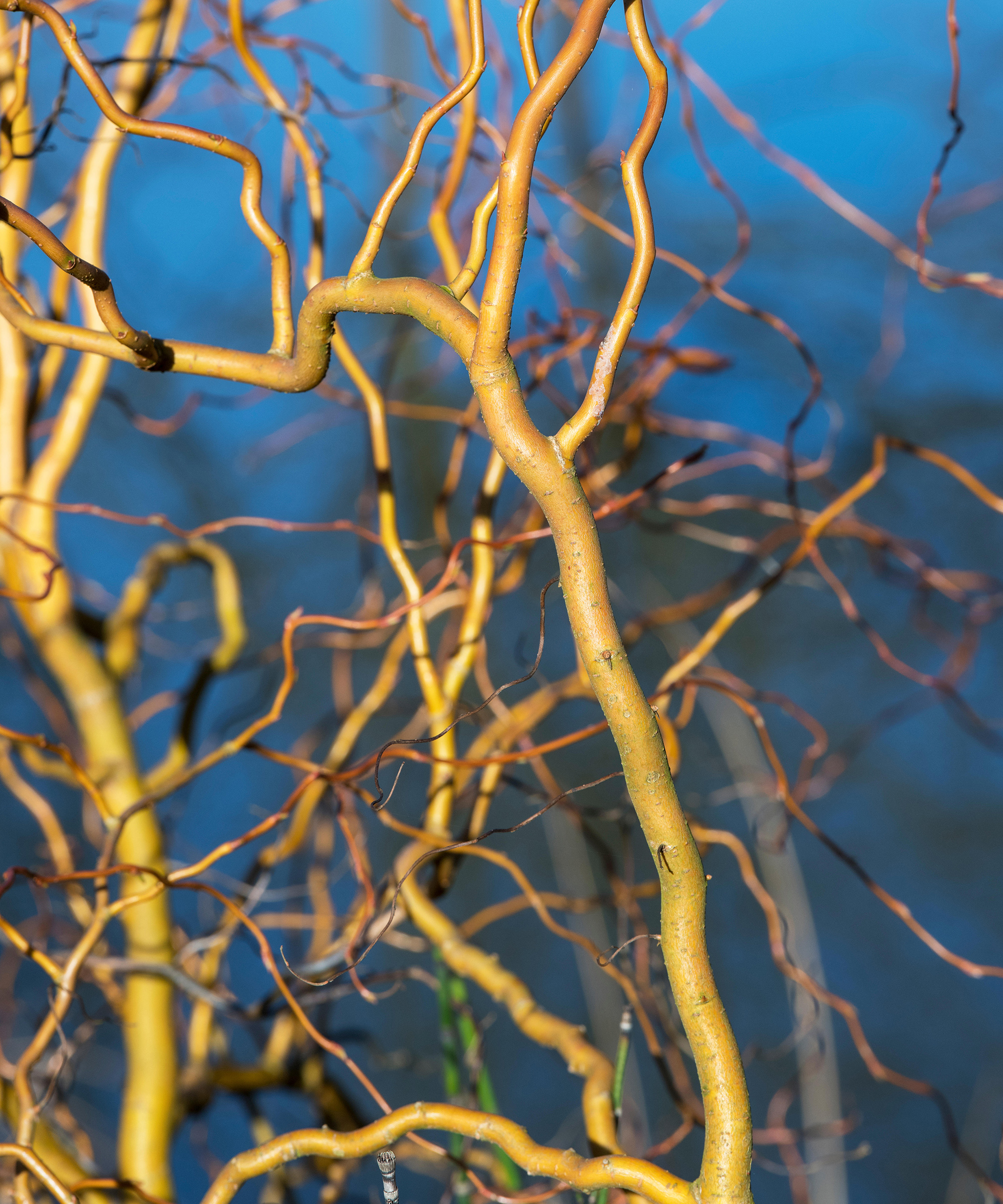
- USDA growing zone: 5 - 9
- Height: 16ft
- Spread: 16ft
Also known more simply as ‘Golden Curls’, this versatile ornamental shrub has curling golden stems that twist and turn downwards, to add pretty architectural interest at this time of year.
In spring there are pretty yellow catkins to look forward to as well. This willow makes a lovely tree for small gardens, but can grow up to 16ft tall, with pendulous tangerine stems that twist and turn.
The yellow spring catkins are joined by curved jade leaves. Which are favored by flower arrangers. It likes sunny spots and moist soils.
2. Betula utilis var. jacquemontii ‘Grayswood Ghost’
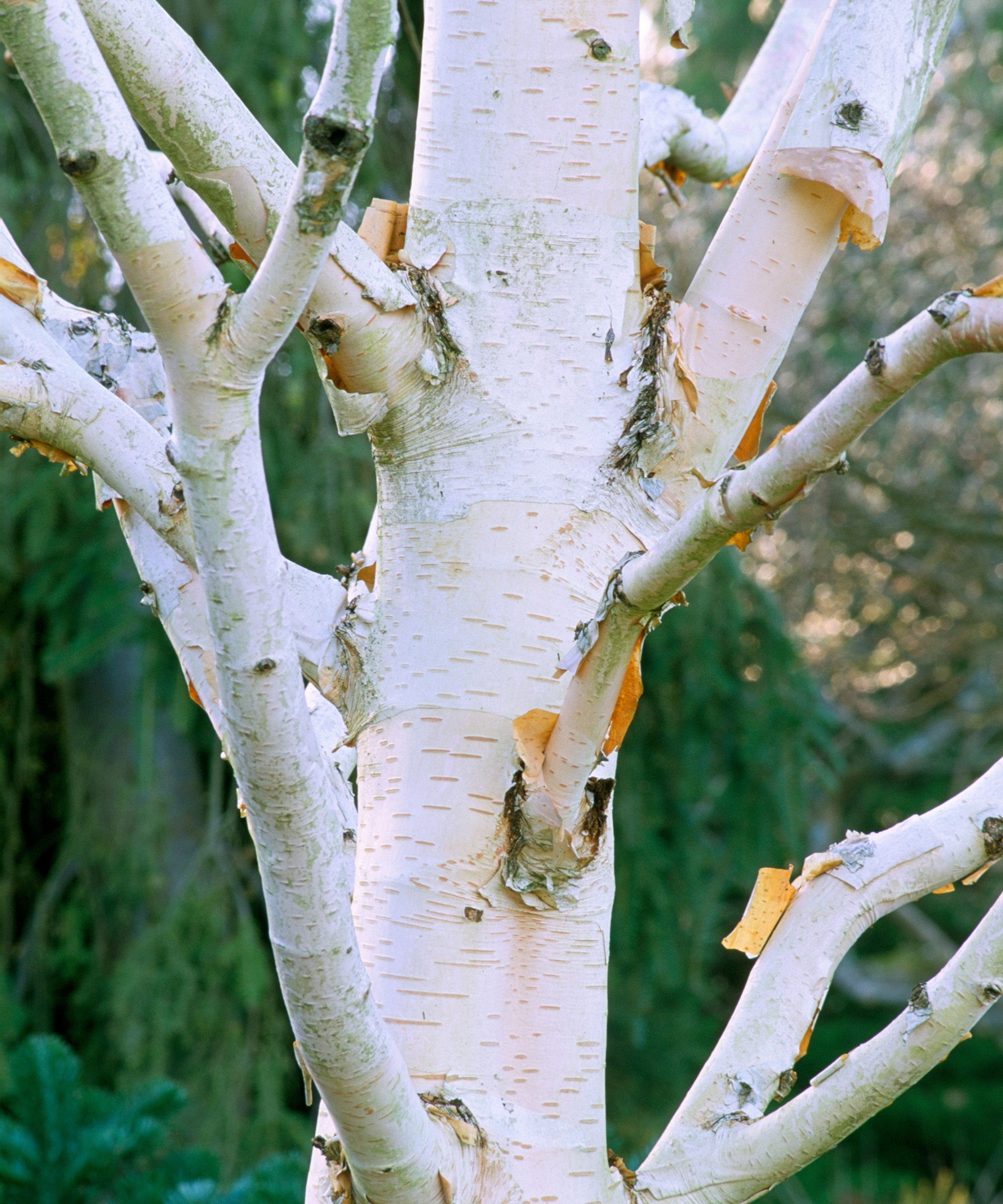
- USDA growing zone: 7-9
- Height: 50ft
- Spread: 26ft
Whether planted as one on its own or in a group, the starkly white stems of the Himalayan birch tree adds an eye-catching luminous touch to the winter garden.
The tactile, almost waxy, bark is marked with distinctive raised slashes, and this is preceded by glossy leaves that turn yellow in fall. Eventually grows to a height of around 50ft.
This species is not deer resistant so will need to be protected from deer.
3. Phyllostachys bambusoides ‘Castillon’

- USDA growing zone: 7-11
- Height: 16ft
- Spread: 8ft
This ornamental evergreen bamboo has tall golden stems patterned with distinctive vertical green-stripes, and glossy, lance-shaped, dark green leaves. It works well for garden screening ideas if you use it to add height and interest to boundary screening.
It will also work well as a container plant on the patio where you can best see its stripy canes in winter. Avoid pot-bellied containers or the roots can get stuck inside.
4. Cornus sanguinea ‘Midwinter Fire’
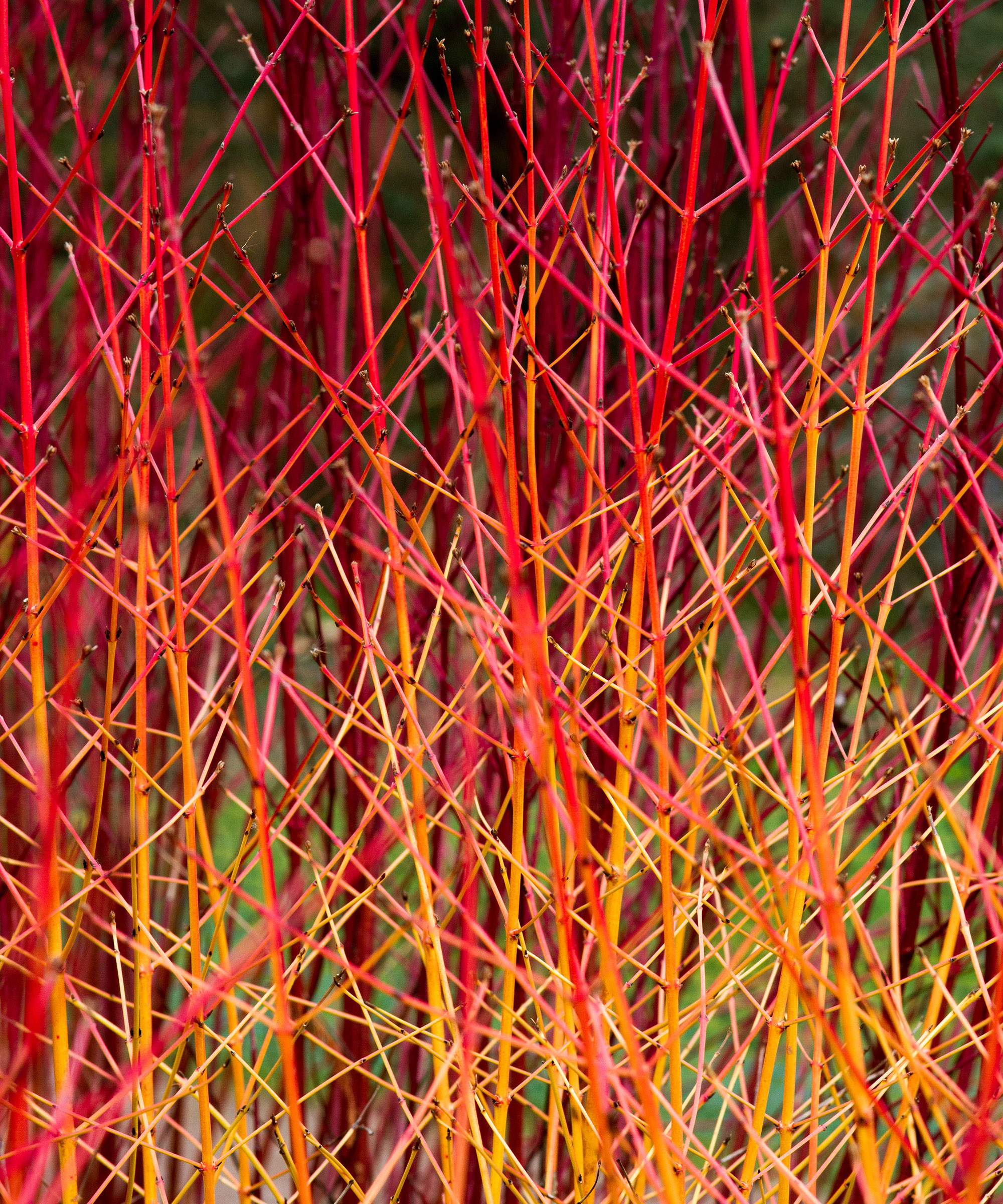
- USDA growing zone: 4-7
- Height: 8ft
- Spread: 8ft
It's easy to see how this variety of dogwood gets its name. For an instant pop, the stunning red of the winter stems of this cornus makes it one of the best plants for winter color.
It provides a bright blaze in the garden when there is little else around. Try planting it against a contrasting background, such as a silver birch tree, or a pale-colored wall, to play on the contrast and create the most spectacular look.
It's one of the less vigorous dogwoods. It doesn't appreciate a hard pruning so only remove one third of its stems in spring.
5. Acer griseum
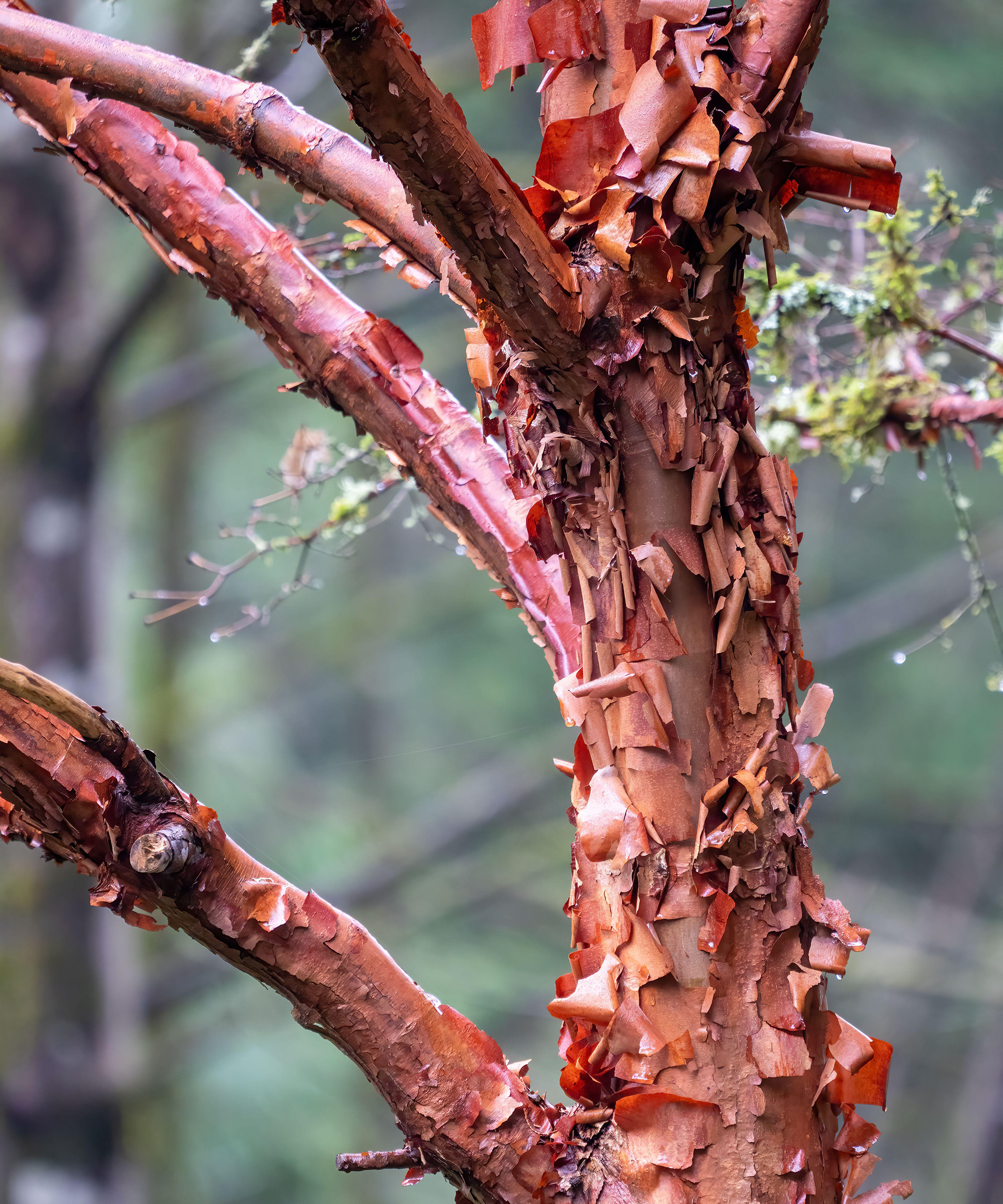
- USDA growing zone: 4-10
- Height: 40ft
- Spread: 26ft
Well known for its peeling, orange-brown bark, use the paper bark maple to add interesting texture when planning a winter garden.
Spring brings new growth and pendants of small yellow flowers, while fall delivers fiery leaf tints, so it's a good all-rounder.
Another beautiful acer is Coral Bark Maple (Acer palmatum 'Sango-kaku').
Tom Su, garden and landscaping expert at Lawn Edging says: The bright coral-red of this tree is a showstopper, especially during winter. It favors good drainage, and partial cover from strong sun.'
6. Salix alba var. vitellina 'Yelverton'

- USDA growing zone: 4-9
- Height: 12ft
- Spread: 12ft
Add a fiery splash of color to the winter garden with this pretty willow, which is tipped with glowing red-orange at winter time.
It's also known as the golden willow tree. Its vibrant bark makes a precious addition to the garden as it adds crucial structural interest as well as color.
Look out for the showy catkins in spring too. This willow loves sun and moist soil.
7. Cornus alba ‘Kesselringii’
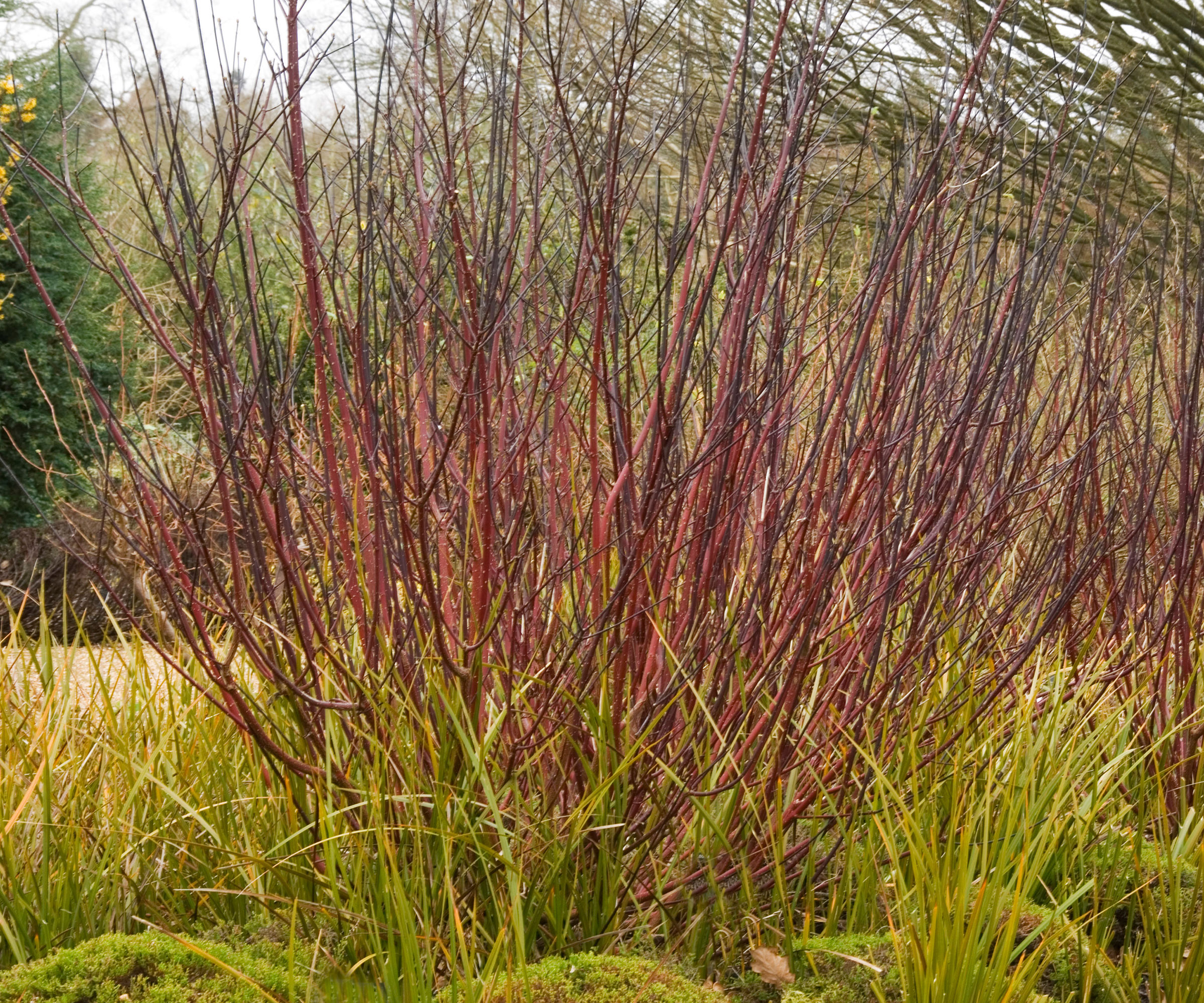
- USDA growing zone: 2-7
- Height: 6ft
- Spread: 6ft
This dogwood adds drama when the dark red stems turn purple in winter. Plant it against trees and shrubs with paler bark to add contrast. A vigorous grower, this adds year round interest too.
It's a favorable choice as a tree for fall color as the leaves turn beautiful shades of red and gold, and white berries glow against the leaf tints. In spring they become plants for pollinators, as their cream colored flowers attract bees and butterflies.
8. Betula albosinensis ‘Chinese Garden’
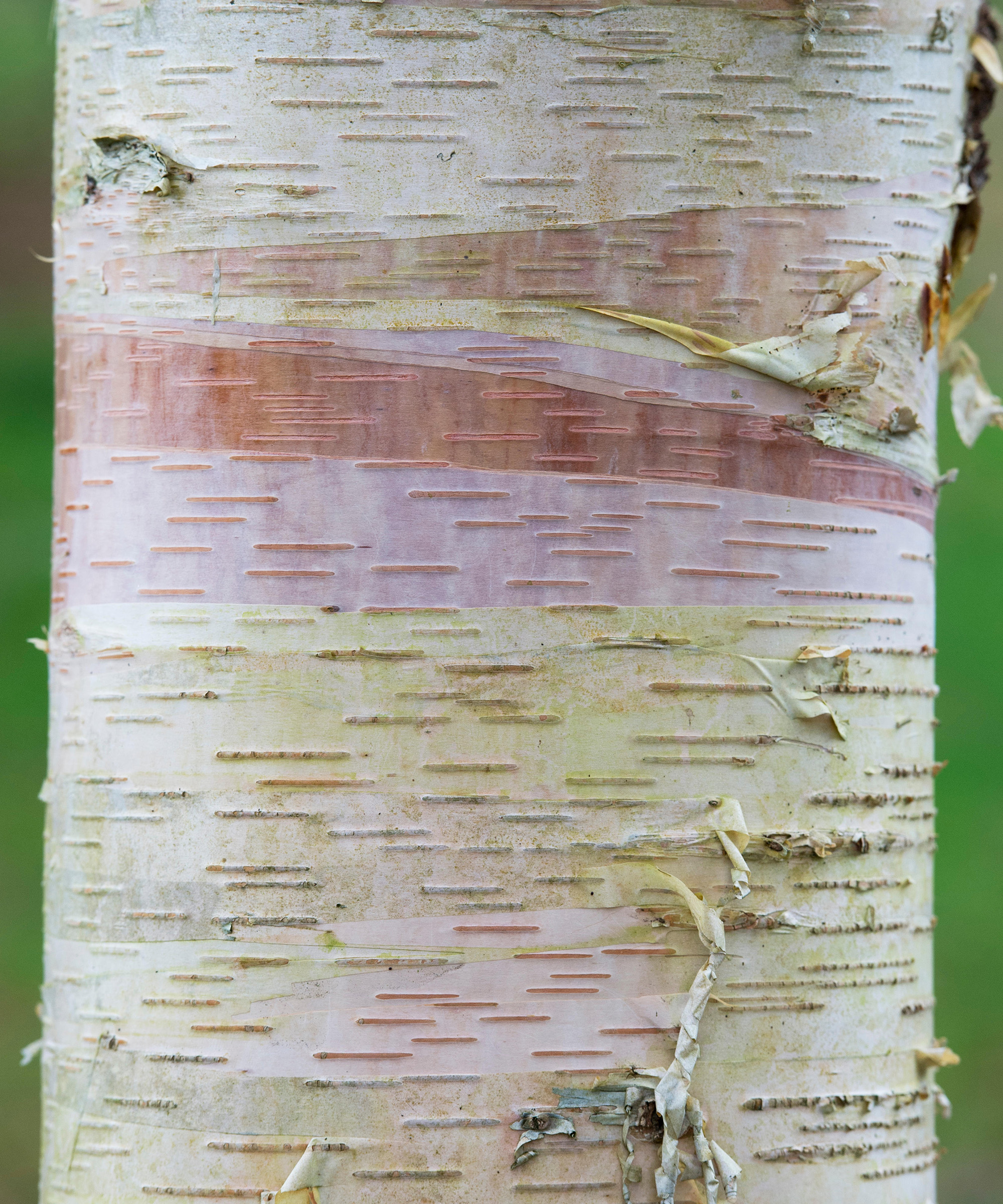
- USDA growing zone: 3-8
- Height: 30ft
- Spread: 20ft
Choose Chinese red birches for their peeling bark, which is honey-toned with pink and copper shades. These beautiful trees are one of the best choices for adding colored and textured bark to the winter garden.
Try planting them together in groups for a mini-forest in your backyard. Be sure to space them to allow room for growth.
9. Tibetan cherry
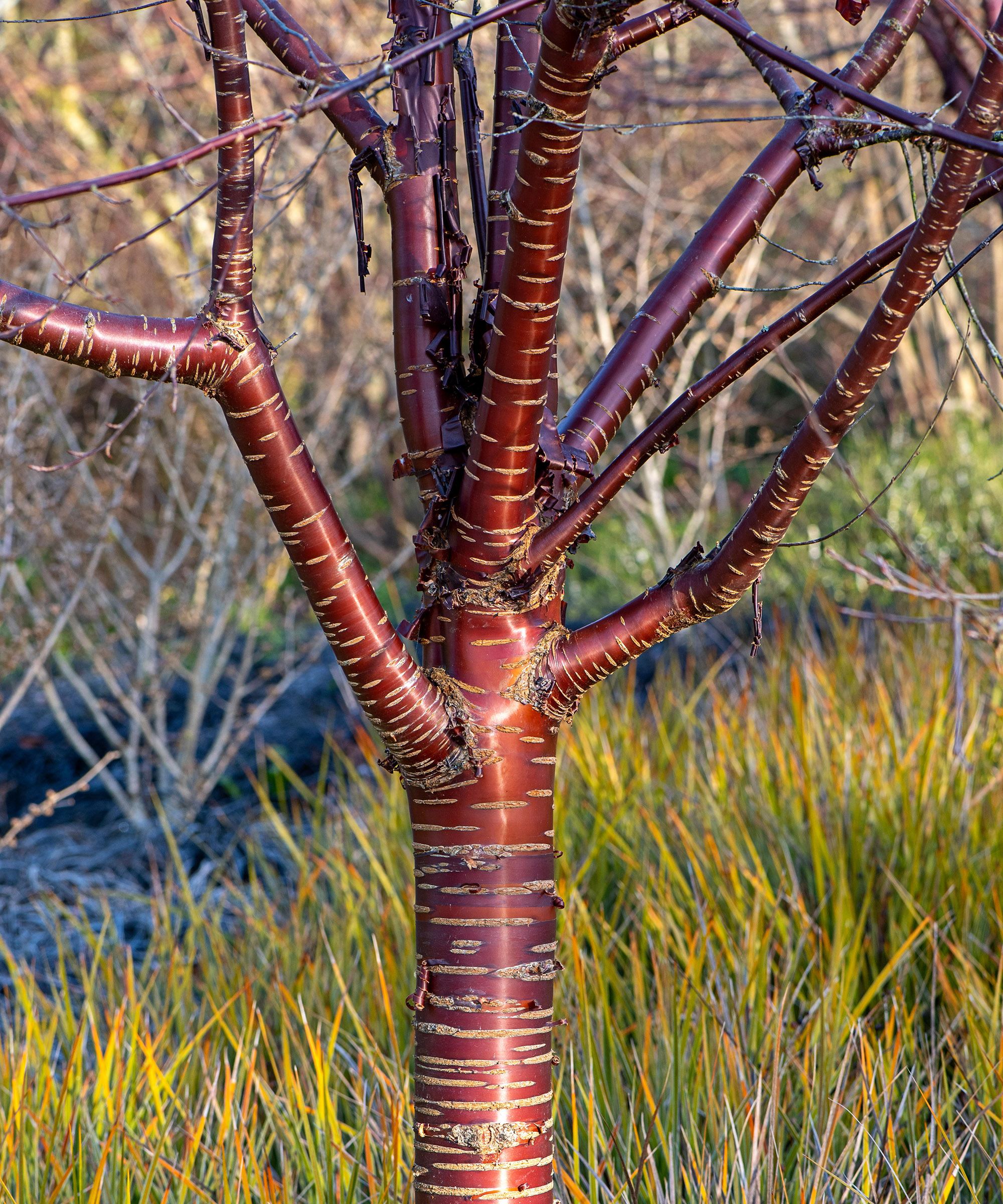
- USDA growing zone: 6-8
- Height: 20ft
- Spread: 20ft
The coppery-red bark of the multi-stemmed Tibetan cherry (also known as prunus serrula) is wonderful whatever the season.
In winter the beautiful shiny mahogany peeling bark is eye-catching. A few months later it emerges as a flowering cherry tree. When there’s the bonus of dainty white flowers that appear in clusters in spring.
The narrow sage-green leaves then turn golden in fall. 'Young plants may need some winter protection in colder regions,' says Tom Su.
FAQs
What trees have the prettiest bark?
'As a designer I always consider the esthetic values of the bark,' says landscape designer Jonathan Fargion . 'Lagerstroemia or crepe myrtle has a very elegant form and a beautiful variegated-color bark, that goes from light orange to light green.'
My other favorites include Pinus bungeana - lacebark pine; Ulmus parvifolia - Chinese elm; Parrotia persica - persian ironwood; Prunus serrula - Tibetan cherry; and Betula jacquemontii - Himalayan birch.
It's easy to think of gardening as something to be enjoyed in fair weather. But these stunning varieties certainly prove otherwise.
The winter garden will be lifted by any one of these plants with attractive winter bark. Their shapely, vibrant stems and textured, colorful bark bring a different level of interest which perhaps may have been overlooked in your backyard before.






